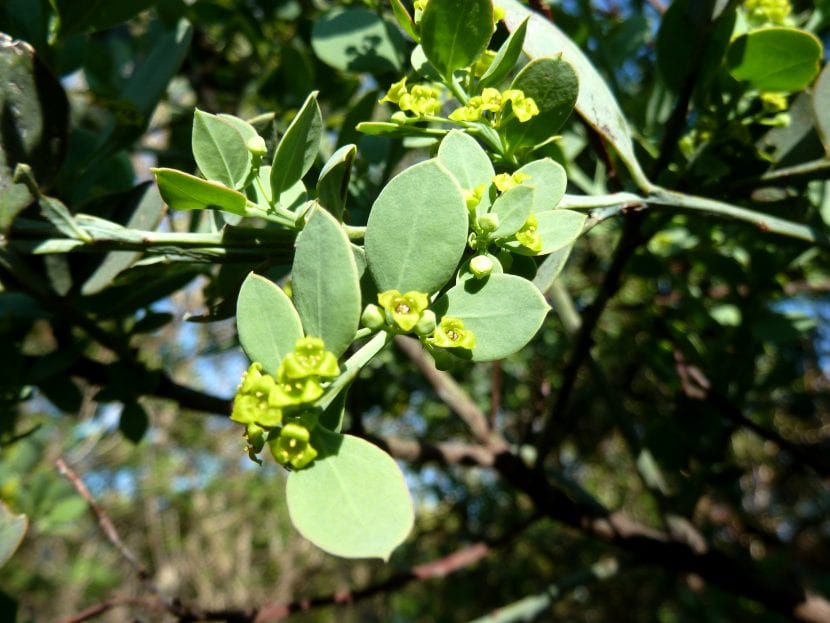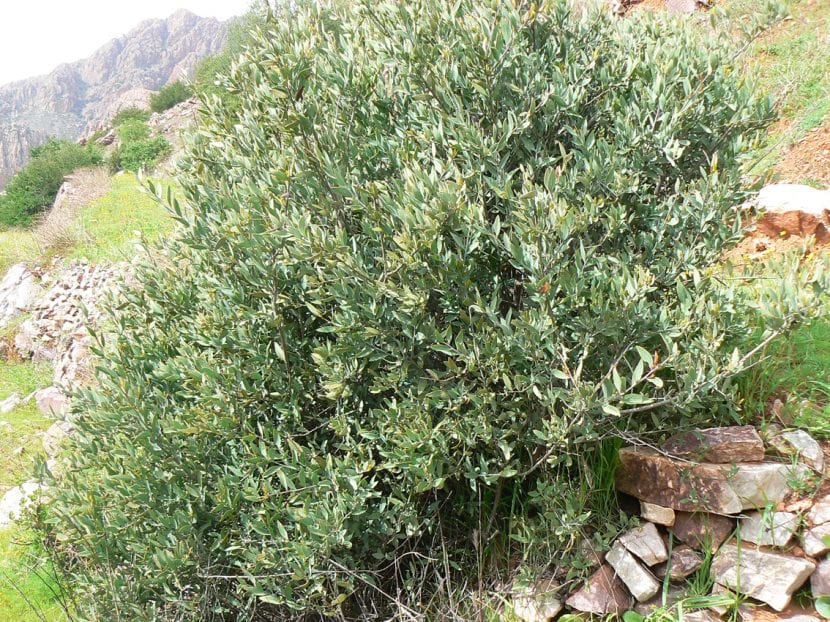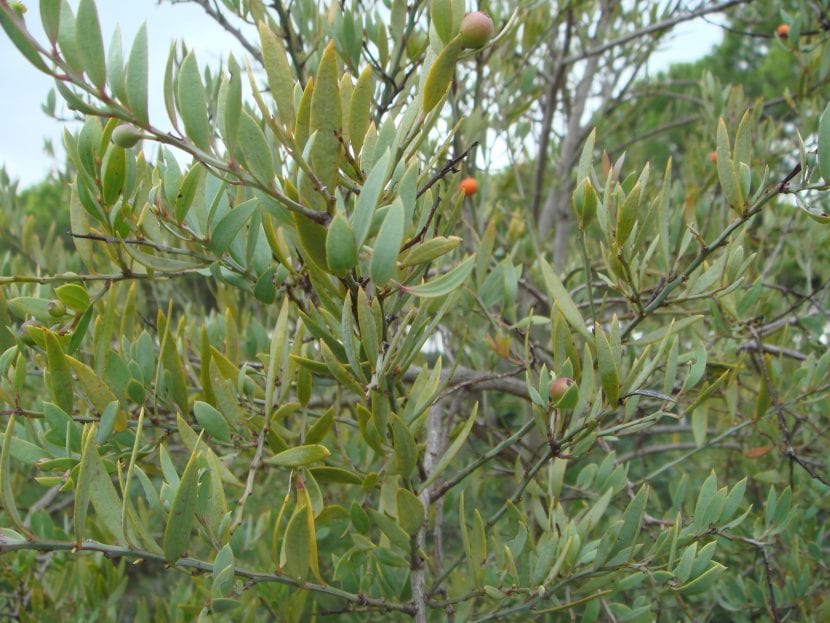
Image - Wikimedia / JMK
In the fields we can find many plants that are really decorative, such as the Osyris lanceolata for instance. This species, native to the Mediterranean, is perfect for growing in places where it is very hot in summer and where drought is usually a recurring problem.
Its size is not very large, but if it still seems too much, you can prune it to lower the height a little without problems.
Origin and characteristics

Image - poker-tisch.info
It is an evergreen shrub called bayon that we will find in the clearings of the western Mediterranean forests, including the south and east of the Iberian Peninsula and the Balearic Islands, Macaronesia, and the north and south of Africa. It reaches a maximum height of 2 meters, and develops a densely branched crown from which alternate, leathery leaves, with the entire margin and greenish color, sprout.
It is dioecious; that is, there are female flowers and male flowers. The first sprout from the lateral branches, and have 3 short stigmas; the latter are grouped in clusters and have an open dome shape. The fruit is purple-red in color, about 7 to 10mm in diameter.
What are their cares?

Image - Wikimedia / Xemenendura
If you want to have a copy of Osyris lanceolata, we recommend you take care of it as follows:
- Location: you have to place it outside, in full sun.
- Earth:
- Pot: use substrates with a pH of 6 to 7,5, such as the universal growing medium that they sell in any nursery or garden store, or here.
- Garden: grows in neutral or limestone soils.
- Irrigation: 2-3 weekly irrigations will be enough in summer, 1-2 weekly the rest of the year.
- Subscriber: in spring and summer with fertilizers such as guano (get it here) or the compost.
- Multiplication: by seeds in spring. Sow them directly in a seedbed with a universal substrate, outdoors.
- Pruning: at the end of winter remove dry, diseased, broken or weak branches. Also take the opportunity to trim those that are growing too much.
- Rusticity: resistant up to -7ºC.
What did you think of this bush?
I would like to receive more information about the cultivation of the cimbidium orchid since I am fond of orchids and what makes me have it (2 years) has not flowered. Thanks and congratulations for the page.
Hello Omar.
We are glad that you like the web.
Regarding your query, in this link you will find more information.
Regards!